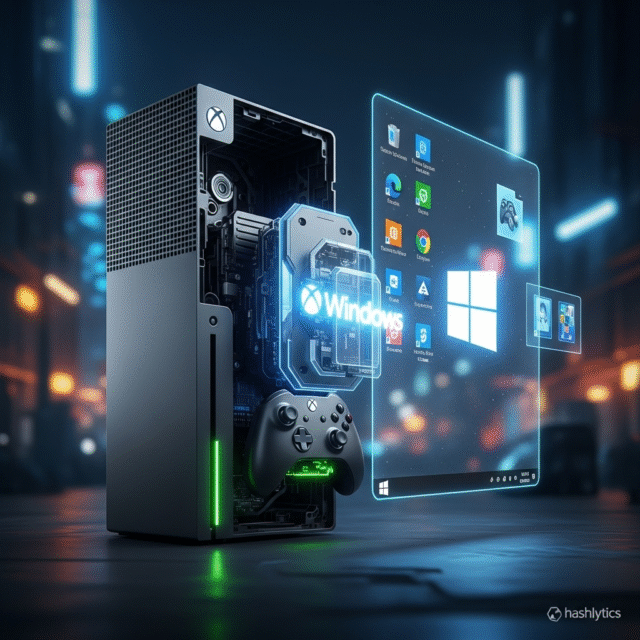Microsoft’s next Xbox is rumored to be running a full version of Windows with a console-style interface, potentially opening access to Steam, Epic Games Store, and the broader PC gaming ecosystem.
Windows on Xbox: What We Know
According to Windows Central, the next Xbox is poised to run a full version of Windows, with a TV-friendly, console-style interface layered on top. This hybrid approach aims to combine Xbox’s ease of use with Windows’ flexibility.
In practice, this would open the door to:
- Multiple storefronts – Steam, Epic Games Store, and other PC game libraries alongside Xbox/Game Pass
- Expanded game library – Access to a much wider range of titles beyond Xbox exclusives
- Software flexibility – Ability to run various Windows applications and services
Microsoft’s Play Anywhere strategy and their recent shift away from strict exclusivity suggest they’re prioritizing consumer choice and platform openness over traditional walled-garden approaches.
The ROG Ally X Preview
The ROG Ally X offers a glimpse into this future, showcasing an Xbox-like interface that seamlessly transitions to the standard Windows OS. This device demonstrates how Microsoft envisions Xbox not just as a console, but as a flexible platform available across different hardware.
The potential benefits for players include:
- Vastly expanded game library – Combining console and PC catalogs
- Seamless integration – Local hardware, cloud gaming, and PC options in one ecosystem
- Mod support – Access to community modifications and custom content
- Peripheral compatibility – Support for a wider range of gaming accessories
Technical Challenges Ahead
This marriage of console and PC brings potential complications that Microsoft will need to address:
- Settings complexity – Managing additional configuration options without overwhelming users
- Driver management – Handling hardware updates and compatibility
- Multiple launchers – Navigating different storefronts and DRM schemes
- TV interface optimization – Maintaining ease of use on large screens with controller input
The key challenge will be maintaining console-grade responsiveness while retaining Windows’ flexibility. This will likely require a dedicated TV shell and intelligent systems that manage background apps and drivers automatically.
Cloud integration is also expected, combining local hardware with hybrid processes such as instant cloud trials and seamless transitions to local installs.
Unanswered Questions
While the rumors are intriguing, many crucial details remain unknown:
- Hardware specifications – What performance level will the console target?
- Pricing strategy – How will Microsoft position this against traditional consoles and gaming PCs?
- Release timeline – When can consumers expect availability?
- Parental controls – How will restrictions work across multiple storefronts?
- Performance profiles – What optimization options will be available for the TV shell?
- Cross-store entitlement – Will purchases on one platform carry over to others?
Until these questions are answered, the next Xbox remains a tantalizing prospect. However, with Microsoft’s demonstrated commitment to consumer choice and platform flexibility, the future of console gaming appears to be moving toward greater openness and versatility.


